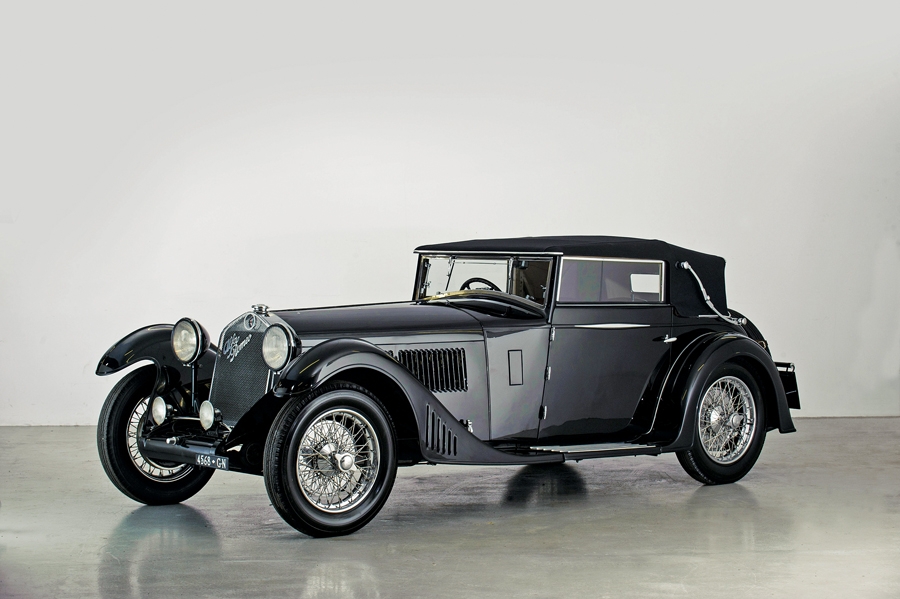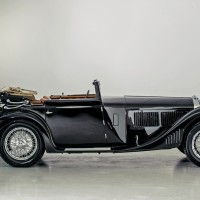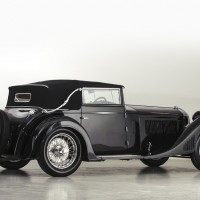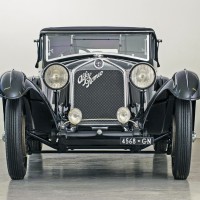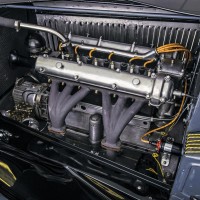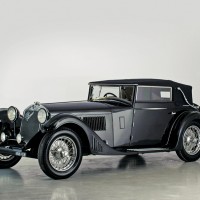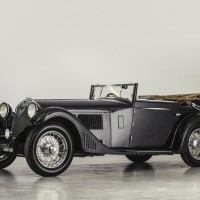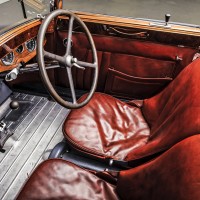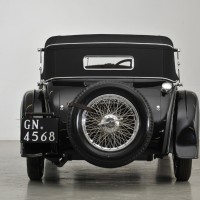SCM Analysis
Detailing
| Vehicle: | 1930 Alfa Romeo 6C 1750 Gran Sport |
| Years Produced: | 1930–33 |
| Number Produced: | 257 (Gran Sport) |
| SCM Valuation: | $1,100,000–$1,700,000 |
| Tune Up Cost: | $1,000 |
| Chassis Number Location: | Plate on firewall |
| Engine Number Location: | Intake side, near front |
| Club Info: | Alfa Romeo Register |
| Website: | http://www.alfaromeoregister.com |
| Alternatives: | 1930 Delage D8 Grand Sport, 1935 Delahaye 135 Competition, 1932 Bugatti Type 55 |
| Investment Grade: | A |
This car, Lot 381, sold for $1,351,515 (€1,184,500), including buyer’s premium, at Bonhams’ Les Grandes Marques du Monde au Grand Palais sale in Paris, France, on February 7, 2015.
This car intrigued me when I read its story in the catalog prior to the sale, and it completely captured me when I stood next to it at the preview in the Grand Palais. In that unbelievably dramatic setting, this low, sleek, black Alfa Romeo took my breath away. I have long been fascinated by competition cars that are given a second act on the motorway and boulevard. The idea of getting dressed in the evening and driving a race-winning car to dinner and the opera is too wonderful to imagine.
Before the function and specification of road and race cars inalterably diverged in the 1960s, such duality was not as inconceivable as it would be today. Can you imagine driving in traffic across the Golden Gate Bridge from your home in Napa Valley into the city for a San Francisco Symphony concert in your recently dealer-purchased, slightly used ex-Team Joest 2014 Audi R18 e-tron Turbo? No, neither can I. Speaking of Le Mans, the French seemed particularly keen on this idea, with many former Delahaye, Delage and Talbot-Lago race cars getting stunning coachbuilt bodies after a victory or two.
Capturing the car’s best time
A challenge for the caretaker of any car when a restoration is considered is that a decision must be made to capture a portrait of the vehicle at a single point in time.
This is further complicated when dealing with a competition car, which by its nature almost always evolves during its planned use. What is the best moment to capture? It could be the moment it left the factory, as originally conceived by its designer; at its most famous race, as piloted by a noted driver; or as modified and developed for its most successful results; or as it existed for the longest period in its life. Any step would be defensible on some level, but only one step is desirable. Any attempt at mixing them can result in a very unsatisfying, non-historic, false object.
Very often, when competition cars were pensioned off by their makers and sold at great profit to new owners, the boulevard bodies they were given are regarded as little more than Groucho Marx eyeglasses with fake eyebrows and nose; something to be tolerated, if not pitied and to be discarded whenever possible. This is especially true in cases when the factory wanted to hide the identity of a former “working” car by stamping a fresh chassis number on the newly minted boulevardier — so its well-heeled owner didn’t know they were paying a new-car price for rather used goods.
The romantic attraction of competition bodywork is so compelling, in fact, that it became almost impossible to find a Derby Bentley saloon or coupe that hadn’t been “improved” with replica Vanden Plas open tourer bodywork. That some of the lost touring bodies on these chassis were arguably as attractive as the coachwork that replaced them — and those touring bodies were certainly a more honest representation of the history of the chassis — is certain.
Turning to Alfa Romeo, while a few hundred 6C 1750 chassis were bodied by Zagato, there are probably more surviving today than ever left their workshop in period.
The right choice rewarded
All this makes it particularly satisfying for me to encounter this Alfa. It had an interesting and very romantic competition history, followed by an interesting post-battle career on the public road with very attractive James Young drophead coupe coachwork. That it retained this body is as much a testament to its various owners through the years as to its great luck in not having been fitted with a more-attractive original racing body. No one seems to have been tempted to toss the heavier road car body in favor of a replica Brooklands Double Twelve one.
Perhaps if Nuvolari instead of Ivanowski had driven the car, the outcome would have been different. We’re all quite fortunate it wasn’t the case. That extensive research also has been done on the car to account for the not-unusual chassis identification number change also helps this case.
This Alfa has spent more of its existence as chassis 8513030 with luxurious James Young coachwork than it did as chassis 8513028 with cycle fenders and no weather equipment. The preservation and restoration of this car has been exemplary, and it was most welcome to see it rewarded in the marketplace. ♦
(Introductory description courtesy of Bonhams.)
